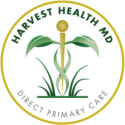5-Tips to Eat More Plant-Based
Here are 5-tips that helped me transition to a more plant-based diet. These tips should not be taken as medical advice, but can be used as an educational tool to help you start your own journey to a healthier way of eating. Please consult your doctor regarding specific diets and your individual medical situation.
These are approaches that I have used in my own personal journey to increase my intake of fruits and vegetables.
- Pre-Made Salad
If you have been looking at a plant-based diet for any considerable amount of time, you have probably seen the recommendation to increase your fruit and vegetable intake. When it comes to vegetables a lot of people have a hard time incorporating enough into their daily eating regimen.
One way I have found to improve my vegetable intake is to use pre-made salads from your neighborhood grocery store. This is a great way to increase your intake of daily greens without having to go out and prepare a new meal or cook. Besides, all pre-made salad packs come with an assortment of different add ons and dressings to expand your palate. I’ve often had patients substitute 2-3 meals per week with a salad to help lower their caloric density and exposure to highly processed carbs, sugars, and fats.
- Incorporate Smoothies
Another way to significantly increase your fruit intake is to substitute a meal or snack with a smoothie. Smoothies are a great way to get a lot of fruits quickly. They have the added benefit of you being able to choose what you put in them. You can also add things such as spinach, flax seeds and/or chia seeds to help increase your iron and fiber.
- Add a Side of Non-starch Vegetables to Every Meal
Adding a non-starchy vegetable such as green beans, asparagus, or spinach is a great way to help improve your vegetable intake. Every meal that you eat should have some form of color to it. Meals that often lack a diversity of color are often lacking a diversity of nutrients. Strive for a plate that looks like the rainbow, if that is too difficult – at least have it look like the field (lots of greens).
- Nuts and Seeds As a Snack
Turn your snacking habit into a healthy habit. A lot of people often snack due to a multitude of reasons. The most common reason that I hear in my medical practice relates to stress or boredom. Since snacking is already a difficult habit to break, we can substitute the types of snacks that we instinctively reach for with healthier replacements.
Examples of healthier snack options are cashew nuts, almonds, peanuts, pumpkin seeds, sunflower seeds and nut butters (peanut, cashew, almond, sunflower. These are great options that allow you to consume healthy fats, while keeping your blood sugar in check.
- Superfood Blends/Powders
Superfood blends, super greens and other plant-based powder blends are a great way to get in a burst of nutrients to your already fixed diet. These typically are great to add to a bottle of water, natural fruit juices or smoothies. Vegan protein and meal supplements are also another way to increase your protein intake without adding animal proteins to your diet, which are often pro-inflammatory.
Harvest Health MD is a Direct Primary Care medical practice located in Savannah, Georgia established by board-certified Family Medicine Physician, Dr. Jamal Lawrence. Dr. Lawrence has special emphasis on Lifestyle Medicine and Plant-Based nutrition in patient care at Harvest Health MD. Interested in learning more about becoming a member of Harvest Health MD? Visit Our Membership Page
– Harvest Health MD

